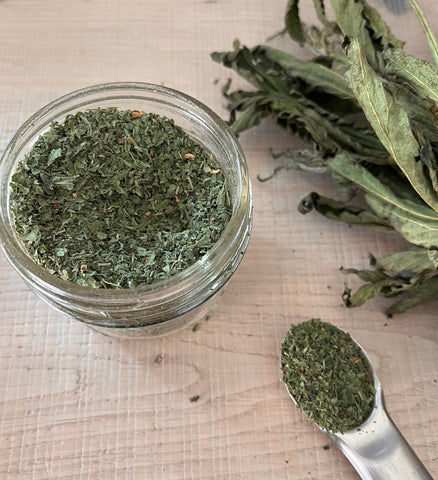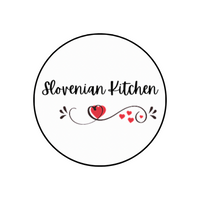
Stinging nettle is a plant that is found across Europe, North America and Asia. It is common to find it on the side of the road, around houses, along the edges of forests, rivers & lakes. It thrives in the hot sun and in rich, moist soil.
In Slovenia, the stinging nettle plant has been used for centuries for medicinal purposes. Our ancestors also added it to many dishes for extra health benefits like in; stews, soups, casseroles, tea, baking, etc.. Nettle is high in iron, magnesium, potassium, phosphor, tannic acid, vitamins A, B2, K, C, and many other various minerals!
The best time to collect and pick nettle is in the spring, early summer and fall. The stem is what releases the stinging chemicals when touched because it is covered with tiny stiff hairs.
How to stop the sting:
If you get stung, wait ten minutes and then wash the area with soap and cool water. After washing, apply tape to remove any remaining fibres. Antihistamines can help reduce itching and swelling. A cold compress can help with irritation and pain. Aloe vera gel and a paste made from baking soda and water might provide some relief. Carefully apply these without rubbing the skin.


The leaves, stem, or root from the nettle plant can be crushed and made into powders, creams, teas, and more.
Here are some ways Nettle offers great health benefits:
🌱 Eases ailments like stress, anxiety, insomnia, colds, and it's used to treat people with lung disorders
🌱 Urinary tract health - Nettle actually helps flush out harmful bacteria from your urinary tract. It is very beneficial for people who have urinary conditions, such as benign prostatic hyperplasia (enlarged prostate gland in men)
🌱 Arthritis pain - Nettle is used to treat pain and sore muscles, especially related to arthritis. It also reduces the inflammation and pain associated with osteoarthritis.
🌱 Blood sugar management - Nettle has proven positive effects with blood glucose levels. It also shows that it may help the pancreas make or release more insulin.
🌱 Nettle is high in a chemical found in plants called polyphenols. Research has proven that polyphenols carries powerful compounds that may play a significant role in the prevention and management of chronic diseases related to inflammation, such as; diabetes, obesity, cancer, and heart disease.
In particular, polyphenols from nettle extract have shown some exciting potential for treating breast cancer too!
🌱 Nettle also carries potent antioxidants, which are substances that protect the body from aging and cell damage 🙌🏼
How to harvest nettle:
▫️Using garden gloves, and wearing a long sleeved shirt. Pick the nettle.
▫️Again using a pair of gloves dip and swish the nettle in a bowl of cold water, repeat ensuring to use a fresh bowl of water, then draining in between the batches.
▫️ Water droplets will cause spots or it can lead to mold. To prevent this from happening remove the surface moisture by rolling and patting the nettle in a clean towel.
▫️Tie 5-6 stems together with kitchen string. To allow good air circulation, do not tie too many stems together.
▫️Label your bundles with dates and hang in a clean, dry and dark place
▫️Let them dry for 1-3 weeks, depending on size of bundles, humidity and maturity
▫️Once they are dry, store them in paper bags or glass jars. * Do not use plastic bags as it can cause them to mold from the condensation
▫️ Use within 6-12 months
Making The Tea:
▫️Bring water to a boil. Add a heaping teaspoon
▫️Turn off the stove and let sit/steep for five minutes.
▫️Pour the mixture through a small strainer.
▫️Add honey. Enjoy!
* Start out by only having one cup of nettle tea to rule out any allergies.
** Be sure to talk to your doctor before you try any new herb. Even natural drinks like tea can cause allergic reactions or interact with certain medications. Some herbs can be harmful to people with certain health conditions.

** If you try my recipes and love them - Please connect with me. Tag me on Facebook, Instagram & Pinterest! I love hearing from you!!
Made with Love,
❤️ Michelle XO
